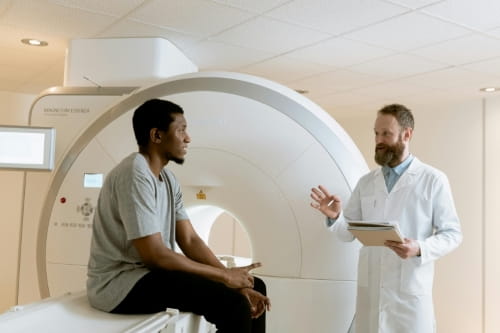1) Thyroid cancer may not cause any signs or symptoms in its early stages
Thyroid cancer starts in the thyroid gland, which is in the front of the neck below the larynx (voice box) and near the trachea (windpipe).
Since the tumour is very small in the early stages, signs and symptoms of thyroid cancer may not appear until the tumour gets bigger and presses on surrounding tissues and organs. Some common signs and symptoms include a lump, pain, or swelling in the neck, hoarseness or other voice changes, difficulty swallowing or breathing, a sore throat or cough that doesn’t go away. The signs and symptoms of thyroid cancer can also be mistaken for other health conditions.

2) The most common type of thyroid cancer is papillary thyroid cancer

3) Most cases of thyroid cancer occur in people who are 20-55 years of age
Types of thyroid cancer include papillary, follicular, anaplastic, and medullary thyroid cancer. Age is an important prognostic factor for papillary and follicular thyroid cancer. People who are younger than 40 have a better outcome (survival) than older people when treated for papillary and follicular thyroid cancer.
Anaplastic thyroid cancer, also known as anaplastic carcinoma, makes up less than 2% of thyroid cancer and usually develops in people over the age of 60. Medullary thyroid cancer, also called medullary carcinoma, makes up about 5% of thyroid cancers and usually develops in people in their 50s and 60s. Age is an important factor when doctors determine what stage the thyroid cancer is in.

4) The younger you are when exposed to radiation, the greater the risk of developing thyroid cancer
The younger you are when treated with radiation therapy, the greater the risk of developing thyroid cancer, especially if you received radiation to the head or neck. This can include people who received radiation therapy to treat cancer, or even non-cancerous conditions such as fungal infections of the scalp.
When thyroid cancer develops, it’s usually 20 to 40 years after exposure. However, the benefit of treating cancer with radiation therapy usually outweighs the risk of developing thyroid cancer later in life.

5) A history of non-cancerous thyroid conditions can increase the risk of thyroid cancer

6) In Canada, the 5-year survival rate for thyroid cancer is 97%
Net survival represents the probability of surviving cancer in the absence of other causes of death. This means that in Canada, about 97% of people diagnosed with thyroid cancer will survive for at least 5 years.

Cancer research and treatment has come a long way. Raising funds and awareness can lead to earlier detection, more effective treatments and higher survival rates. With your support, we can continue changing the future of people affected by cancer.
